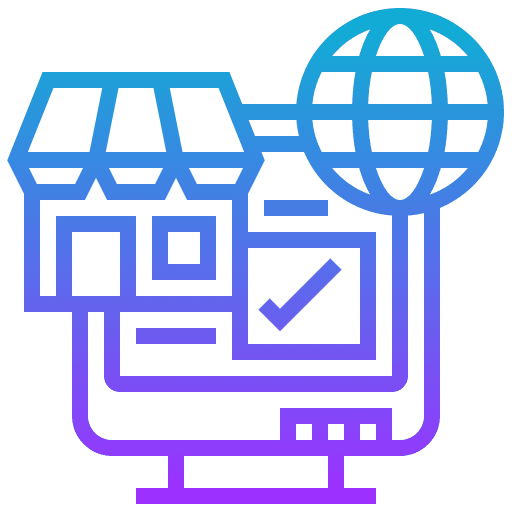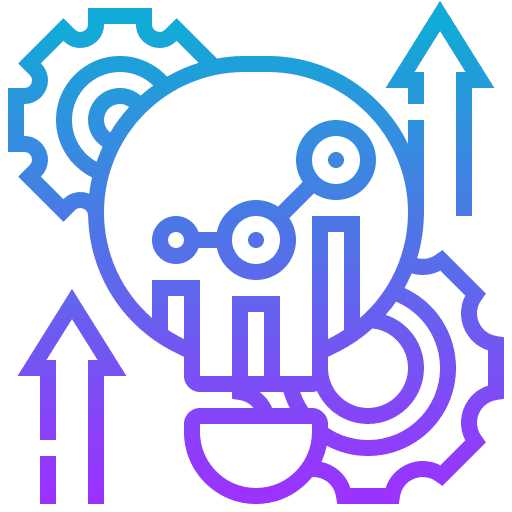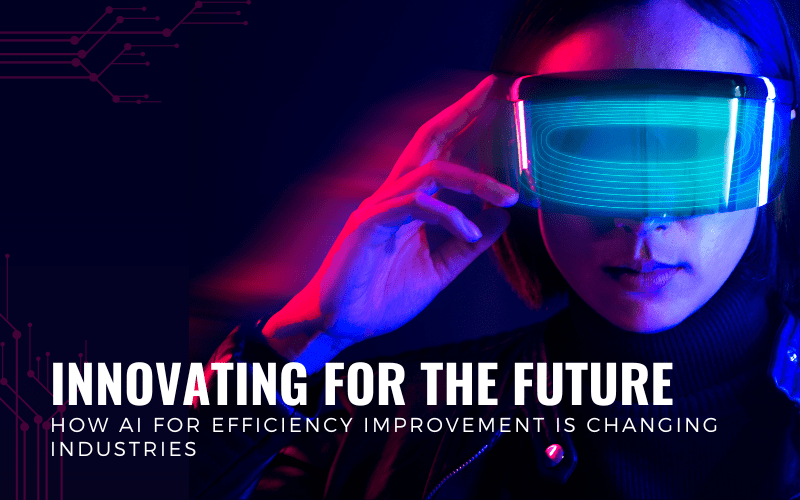Innovating for the Future: How AI for Efficiency Improvement is Changing Industries
In today’s fast-paced world, the drive for efficiency touches every aspect of our lives. From the way we manage our daily tasks to the operation of global industries, the goal is clear: do more, do it better, and do it with less Effort. This is where Artificial Intelligence, or AI, steps in—not as a distant, futuristic concept but as a tangible, powerful tool that’s already reshaping the way we work and live.
AI for Efficiency Improvement isn’t about replacing human effort; rather, it’s about augmenting our capabilities. It turns the spotlight on how we can convert our hard work into smart work by leveraging AI technologies. These intelligent systems analyze vast amounts of data, learn from patterns, and make decisions or offer recommendations in fractions of a second. Whether it’s streamlining operations, reducing waste, or enhancing productivity, AI is proving to be a game-changer.
But what does this look like in real life? Imagine predictive maintenance in manufacturing, where AI algorithms predict equipment failures before they happen, saving costs and downtime. Or consider personalized customer service through chatbots that offer 24/7 support without breaking a sweat. These are just the tips of the iceberg. AI’s role in driving efficiency transcends industries, from healthcare to finance, education to logistics, making our work not just faster and easier but also more impactful.

Maximizing Productivity: The Impact of AI on Workplace Efficiency
- Automating Routine Tasks: AI is revolutionizing the workplace by automating time-consuming tasks such as data entry and scheduling. This shift not only accelerates operations but also reduces human error, leading to a smoother workflow.
- Enhancing Decision Making: With its unparalleled data processing and analysis capabilities, AI empowers businesses to make informed, data-driven decisions quickly. This is crucial for maintaining a competitive edge in today’s fast-paced market.
- Improving Communication and Collaboration: AI-driven tools like chatbots and virtual assistants streamline communication and collaboration, ensuring that teams operate more efficiently and cohesively.
- Customizing Employee Experience: AI personalizes the workplace experience, from adaptive learning platforms to task recommendations, optimizing productivity by catering to individual preferences and workloads.
- Predictive Analytics for Proactive Management: AI’s predictive analytics anticipate future trends and potential issues, allowing businesses to adopt proactive approach. This foresight minimizes downtime and optimizes resource allocation, enhancing overall efficiency.
In essence, AI is not just a tool but a transformative force in the workplace, redefining productivity and efficiency through automation, enhanced decision-making, improved communication, personalized experiences, and predictive insights.
Smart Strategies: AI for Business Process
AI for Business Process explores the transformative role of artificial intelligence (AI) in redefining business operations for the modern era. This comprehensive guide delves into the practical application of AI technologies to streamline business processes, enhance decision-making, and drive unparalleled efficiency across various industries. Readers will gain insights into:
- AI streamlines routine tasks, integrating with robotic process automation (RPA) for adaptive and improving solutions, enhancing strategic innovation.
- AI’s power in data analysis for actionable insights, with machine learning predicting trends and optimizing operations, illustrated by successful business applications.
- AI enhances customer interactions with natural language processing and chatbots, enabling personalized services and stronger relationships.
- AI improves supply chain, inventory, and logistics efficiency through predictive analytics and optimization algorithms, reducing costs and enhancing delivery.
- AI identifies and mitigates risks, including financial fraud and cybersecurity, through transaction monitoring and pattern analysis.
- Explores AI’s evolving trends and ethical deployment, emphasizing fairness, transparency, and privacy.
AI for Business Process” provides a mix of knowledge and practical insights for effectively implementing AI strategies, serving as a resource for optimizing operations and exploring new opportunities in the AI business landscape.

Path to Efficiency: AI’s Operational Role
Here’s a more technical perspective on how AI contributes to enhancing operational efficiency across industries:
1. Machine Learning Models for Predictive Analytics
Techniques: Utilization of supervised, unsupervised, and reinforcement learning techniques to analyze historical data and predict future trends.
Applications: Predictive analytics for demand forecasting, inventory management, and predictive maintenance. Time series analysis, regression models, and neural networks are commonly used.
2. Natural Language Processing (NLP) for Customer Service Automation
Techniques: Leveraging NLP and machine learning algorithms to understand and generate human language. Use of sentiment analysis, chatbots, and voice recognition systems.
Applications: Automated customer support, sentiment analysis to gauge customer satisfaction, and automated response systems that can handle a wide range of customer inquiries.
3. Optimization Algorithms for Supply Chain Management
Techniques: Application of linear programming, integer programming, and evolutionary algorithms to optimize logistics, inventory levels, and supply chain routes.
Applications: Dynamic routing of delivery vehicles, optimization of warehouse operations, and inventory level optimization to reduce holding costs and improve delivery times.
4. Deep Learning for Quality Control
Techniques: Implementation of convolutional neural networks (CNNs) and computer vision techniques to detect defects and anomalies in manufacturing processes.
Applications: Real-time quality inspection systems that can identify defects at various stages of the manufacturing process, reducing waste and improving product quality.
5. Reinforcement Learning for Process Optimization
Techniques: Use of reinforcement learning algorithms to optimize decision-making processes in dynamic and uncertain environments.
Applications: Autonomous systems for dynamic pricing, real-time resource allocation, and operational strategies that adapt to changing conditions to maximize efficiency and minimize costs.
6. Big Data Analytics and Edge Computing
Techniques: Leveraging big data analytics for processing and analyzing large datasets. Use of edge computing to process data on local devices near the source of data.
Applications: Real-time data analysis for immediate operational adjustments, reducing latency, and ensuring data privacy and security.
7. Blockchain for Supply Chain Transparency
Techniques: Implementation of blockchain technology to create a decentralized, transparent, and immutable ledger for tracking the provenance and status of goods in a supply chain.
Applications: Enhanced transparency and security in supply chains, improved traceability of products, and reduced fraud.
These technical approaches and methodologies demonstrate the depth of AI’s role in operational efficiency. By leveraging advanced algorithms and cutting-edge technologies, AI is not just automating tasks but also enabling smarter decision-making, optimizing processes, and transforming business operations at a fundamental level.

AI processes and tools
To boost efficiency across various sectors, AI employs a range of processes and tools, each designed to optimize different aspects of business operations. Here’s an overview of some key AI processes and tools that are instrumental in enhancing efficiency:
Robotic Process Automation (RPA)
RPA uses AI to automate routine and repetitive tasks previously performed by humans. This includes data entry, invoice processing, and other administrative tasks. By automating these tasks, companies can significantly reduce the time and resources spent on them, thereby improving efficiency.
AI-Powered Analytics Tools
These tools leverage AI algorithms to sift through massive datasets, providing insights that help businesses make informed decisions quickly. For instance, AI-powered analytics can forecast market trends, optimize supply chain operations, and personalize marketing strategies to improve efficiency and effectiveness.
Intelligent Automation
Combining AI with automation, intelligent automation extends beyond routine task automation to include decision-making and continuous learning. This allows for the automation of complex processes, such as dynamic pricing models or personalized customer recommendations, further enhancing operational efficiency.
AI-Optimized Hardware
Designed specifically to handle AI workloads, AI-optimized hardware accelerates the processing of AI algorithms. This hardware supports more efficient data processing, analysis, and the implementation of AI solutions, reducing latency and increasing throughput in AI-driven tasks.
Predictive Maintenance Tools
Utilizing AI to predict when machines and equipment might fail or require maintenance, these tools help avoid downtime and extend the lifespan of machinery. By analyzing data from sensors and historical maintenance records, AI can forecast potential issues before they occur, scheduling maintenance only when necessary.
Conclusion
Innovating for the Future underscores the pivotal role of AI in revolutionizing efficiency across industries, demonstrating how it transcends traditional automation to foster smarter decision-making, enhance operational processes, and drive productivity. Through advanced analytics, customer service automation, and predictive insights, AI not only streamlines operations but also empowers businesses to navigate the complexities of the modern market with agility and foresight. As we embrace AI’s transformative potential, it’s clear that its integration into business processes represents a significant leap towards a more efficient, innovative, and sustainable future, marking a new era of operational excellence.
Frequently Asked Questions
Q1: What is “AI for Efficiency Improvement”?
“AI for Efficiency Improvement” refers to the use of Artificial Intelligence technologies to enhance operational efficiency, streamline processes, and improve productivity across various industries. It encompasses automating routine tasks, optimizing decision-making through data analytics, and implementing smart systems that adapt and learn over time.
Q2: How does AI contribute to efficiency in industries?
AI contributes to efficiency by automating time-consuming and repetitive tasks, enabling predictive maintenance, optimizing supply chain management, enhancing customer service through chatbots and personalized experiences, and providing actionable insights for better decision-making.
Q3: Can AI replace human workers?
AI is designed to augment human capabilities, not replace them. It takes over routine and mundane tasks, allowing human employees to focus on more strategic, creative, and complex problems that require human insight and empathy.
Q4: What industries are most impacted by AI for Efficiency Improvement?
While AI has the potential to impact nearly every industry, sectors like manufacturing, healthcare, finance, logistics, and customer service are currently seeing significant transformations thanks to AI-driven efficiency improvements.
Q5: What are the challenges of implementing AI for Efficiency Improvement?
Challenges include the initial cost and complexity of implementing AI technologies, the need for upskilling or reskilling employees to work alongside AI, ensuring data privacy and security, and addressing ethical considerations related to automation and decision-making.
Q6: What future trends can we expect in AI for Efficiency Improvement?
Future trends include the increased use of AI in predictive analytics, the growth of AI-driven automation in more sectors, advancements in natural language processing for better customer interactions, and more ethical and transparent AI systems that respect user privacy and fairness.
Q7: How can businesses start incorporating AI for Efficiency Improvement?
Businesses can start by identifying areas with the highest potential for impact, such as customer service, data analysis, or operational processes. Investing in AI technologies and training for staff, and partnering with AI solution providers or consultants, can also pave the way for successful AI integration.













